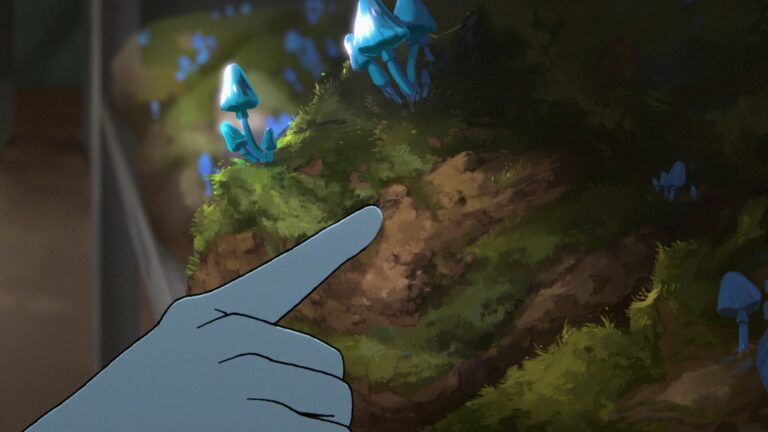If you ever wondered how a truly international animation team keeps its groove, look no further than animation supervisor Diego Polieri — he’s the glue, the compass, and sometimes, the megaphone. Working on seven pivotal episodes for our beloved show, Polieri led the charge, balancing style, speed, and, let’s be honest, probably a fair bit of caffeine. The guy not only handled his own creative vision, but also made sure Green Street and their dynamite partner studio, Le Cube, found the same beat — even though these teams clocked in from opposite sides of the globe.
Let’s break down how Polieri managed to keep everything moving like a well-oiled machine, especially when it came time for tricky pipeline hurdles and heart-thumping key scenes.
Wrangling Chaos: Building an Animation Pipeline Across Planets (Well, Almost)
Managing animation studios in different hemispheres? Yeah, it’s as gnarly as it sounds. Every studio has its flavor — Green Street likes their workflow spicy, Le Cube throws in a dash of flair from Buenos Aires. But the trick is in making all those unique touches play nice together.
Polieri didn’t just cross his fingers and hope for the best. He:
- Standardized file naming and versioning across both studios (so no more ‘final_final_v15_b’ chaos).
- Established daily sync-ups for leads, keeping everybody informed about what’s on fire — or running smoothly.
- Created a robust feedback loop that bounced between continents, so shots never disappeared into the digital ether.
- Encouraged teams to work inside the same technical “sandbox,” using agreed-upon rigs, color palettes, and animation tools.
And here’s a hidden bit: the teams leaned heavily on cloud-based review platforms. Everyone could see dailies, ping in real-time, and annotate frames with little digital sticky-notes, whether they were in London or São Paulo. No more lost midnight emails or awkward “Hey, did you see this?” messages.
The Anatomy of a Key Scene: Global Hands, Singular Vision
Polieri’s fingerprints show up everywhere, but the team’s big test came with the wild chase sequence in episode four. Here’s why it could’ve been a disaster:
- The scene needed tightly matched character movements, plus backgrounds whizzing by in perfect perspective.
- Half the key animators hailed from Green Street, the other half from Le Cube.
- Creative differences threatened to poke out — one team preferred bolder expressions, while the other went for subtlety.
But under Polieri’s watch, the chase scene gelled like peanut butter and jelly. He held video breakdowns for reference material and walked both teams through exactly which stylistic points they had to nail. Using side-by-side comparisons and frame overlays, he mapped out how to bridge the studios’ natural tendencies.
He made sure animators learned each other’s quirks. For example, if Green Street’s storyboarders hinted at a manic energy during a car jump, Le Cube’s artists picked up the cue in the backgrounds. The result? Every beat — no matter who animated it — felt like it belonged in the same breathless moment.
The Vibe: Not Just Boss, But “Camp Counselor”
Let’s get real: remote work can feel isolating, especially in ultra-collaborative fields like animation. Here’s where Polieri dialed up his secret sauce — making every team member feel heard. He knew a happy animator is a productive animator.
He didn’t just drop notes in Slack and vanish. He organized weekly virtual coffee breaks, where animators could dish about anything — not just frame rates and easing curves. Newcomers received the “Polieri Welcome Tour,” complete with a crash course on project lore and team in-jokes. Birthdays? Oh, those got memes and mock awards. It all added up to a tight-knit vibe.
The team also had a shared compendium of style guidelines and cheat sheets. Everyone knew where to look for animation curve presets, facial expression guides, and even color-grading secrets. So when deadlines loomed — because let’s face it, they always do — the crew ran like a Formula 1 pit stop, not a bumper-car rink.
Feedback in Real-Time, Not Just “Later, Dude”
Animation, at the pro level, moves fast. One week you’re blocking rough poses; blink, and it’s time for final color. So waiting days for notes? Polieri hated that. He drove home the need for immediate, constructive feedback.
Here’s how he did it:
- Leveraged collaborative review software where leads could add onion-skin overlays, arrows, and audio notes.
- Set up “Quick Crits”—15-minute sprints where teams dumped works-in-progress into a shared folder and everyone chimed in.
- Organized “All-Hands Jam Sessions” near the end of complex sequences. When energy sagged, he’d share reference clips, example breakdowns, and sometimes just a goofy animation meme to snap folks out of the work fog.
Polieri’s method kept revisions focused and prevented any last-minute horror stories. And everybody learned a little more each round, raising the bar for quality — plus sanity.
Transforming Gut-Check Moments Into Growth Spurts
Animation production always springs surprises — a corrupted file here, a last-minute script change there. Sometimes, halfway through an episode, vision shifts or new requirements land on the table. When those moments arrived, Polieri didn’t panic (at least not in front of the crew).
He turned crises into creative jams:
- Brought together Green Street’s technical brainiacs with Le Cube’s design wizards for whiplash brainstorming.
- Encouraged animators to try unexpected solutions, celebrating “happy accidents” whenever something beautifully unexpected snuck into a scene.
- Emphasized that, even when tech snags popped up, nobody pointed fingers. Instead, Polieri fostered a trust-first culture that helped the whole unit bounce back stronger next episode.
Flashbulb Moments: What Stuck With the Team
So, when people talk about season highlights, you know they’ll zero in on those seamless chases, the perfectly fluid character walks, and those “invisible” transitional shots you almost miss — but that would look janky if done wrong.
Under Polieri’s leadership, a few house rules became gospel:
- Always double-check scene handoffs. Reduces headaches every single time.
- Never let too many versions stack up — clean as you go.
- If something looks off, say something early. Nip it in the bud.
Animator testimonials bubbling on social media (as of June 2025) echo the sentiment:
“This was the smoothest remote workflow I’ve seen.”
“Diego’s team spirit is only rivaled by his chase scene references. The guy’s a library.”
And, one famous meme: “Green Street, Le Cube, and Polieri: The Real Animation Avengers.”
A Few Lessons in the Rear-View Mirror
So, here’s the final bit. Looking back at the seven episodes, the collaboration between Green Street, Le Cube, and Diego Polieri didn’t just work out — it lit up screens everywhere.
Polieri’s playbook — equal parts organization, empathy, and technical wizardry — set a standard. Studios followed up with more shared knowledge bases and kept cross-studio happy hours alive (online or in-person, depending on time zones and everyone’s sleep schedules).
What’s clear? Good animation is not just pixels lining up on a timeline. It’s people learning each other’s rhythms, chasing the same spark, and never being afraid to tweak, laugh, and high-five — even if it’s through a screen.
And you better believe: the next time a major episode calls for that energy, agencies everywhere will be asking, “How would Diego Polieri do it?”




